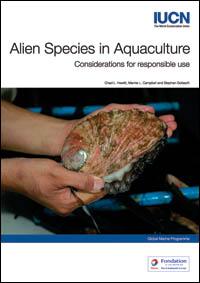Alien species in aquaculture : considerations for responsible use

Publisher:
Organization(s):
Aquaculture is an important economic activity in coastal areas of many countries. It offers opportunities to alleviate poverty, boosts employment, helps community development, reduces overexploitation of natural coastal resources, and enhances food security. It is one of the fastest growing sectors within fisheries. Currently most aquaculture facilities in the marine environment, particularly in developing countries, use non-native or alien species, mainly to reduce costs by using readily available research and development outputs. With the rising awareness of the ecological and economic impacts caused by alien species around the world, several international policy instruments are calling for the application of a precautionary approach and are discouraging deliberate introduction of alien species for aquaculture purposes. This publication provides some simple sets of guidelines with consideration of the special needs of developing countries. It aims to provide decision makers and managers with information on existing international and regional regulations that address the use of alien species in aquaculture, directly or indirectly; and three examples of national responses to this issue. The last section of the document provides some considerations and suggestions to be taken into account by decision makers and managers when using, or deciding on the use of, alien species for aquaculture purposes.
Includes bibliographic references
Broad subject:
Call number:
Record updated: 2022/05/24
